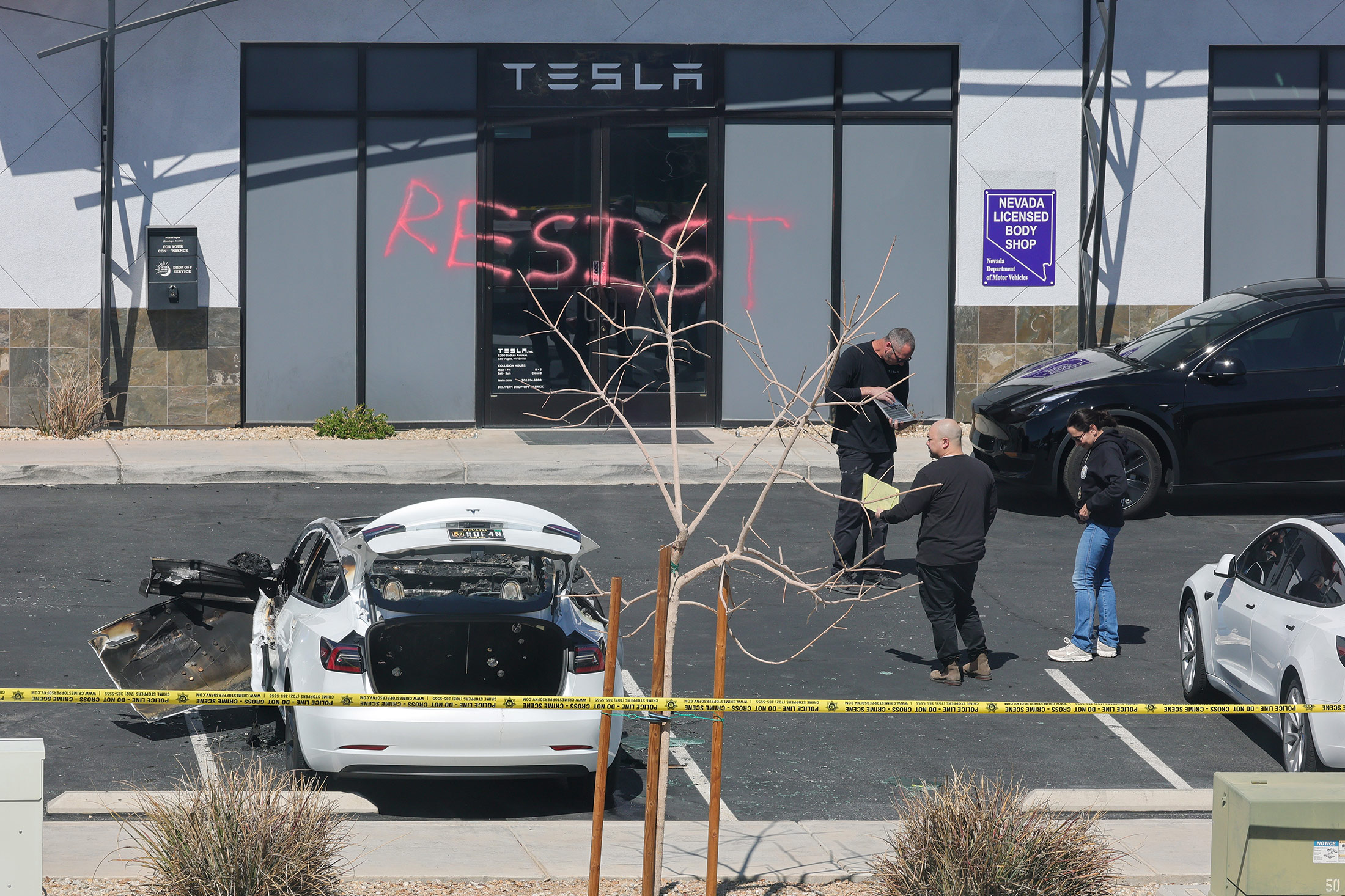The vaping health crisis sweeping the U.S. is highlighting how little scientists and health officials know about the marijuana being consumed on a daily basis by millions of Americans.
That lack of research, which stems from a longstanding federal prohibition on marijuana, is becoming a problem for the $10 billion legal weed industry, where vaping products have been the fastest-growing area.
Even as marijuana rules have loosened in more than 30 states, there’s little information available on the new products that are appearing in stores across states like Colorado and California. Researchers are restricted from walking into a marijuana store in Denver or Los Angeles and buying products for testing because their funding could be jeopardized if they run afoul of federal regulations.
“It’s an absurd situation,” said Matthew Johnson, an addiction expert at Johns Hopkins University. “It hampers our ability to know the good, the bad and the ugly about cannabis use.”
Health officials have attributed more than 500 mysterious illnesses and at least eight deaths to vaping. It’s not clear exactly what’s causing the illnesses, but they’ve been reported most often in patients inhaling products containing THC, the main active ingredient in marijuana, according tothe Centers for Disease Control and Prevention. Regulators are cracking down on e-cigarettes and on Sept. 24, Massachusetts also temporarily banned both cannabis and tobacco vaping products.
The vaping crisis has weighed on shares of marijuana companies and also derailed merger talks between tobacco giants Philip Morris International Inc. and Altria Group Inc., which owns a 35% stake in Juul Labs, the dominant e-cigarette maker in the U.S.
‘Crazy Thing’
University of Colorado professor Kent Hutchison wants to know whether cannabis products are contributing to vaping-related illnesses, but he would be breaking the law if he studied them on campus.
“The crazy thing that’s totally frustrating is if one of our Nobel-winning chemists wanted to look at some of these counterfeit vaping products to try and figure out what’s causing these problems, they can’t do it,” said Hutchison, a professor in the department of psychology and neuroscience and co-director of the university’s CUChange institute.
To date, there has never been a study on vaping cannabis, according to Jeff Chen, who runs a marijuana research institute at the University of California, Los Angeles. UCLA has a machine capable of testing cannabis oil, but the pot stores near campus are off limits because of federal rules, he said.
The current vaping crisis has focused attention on the substances used to dilute cannabis oil for vaping and little is known about what happens when those products are heated. There are also concerns about the devices used to vape nicotine and marijuana, which almost exclusively come from China.
The federal government has left it to the states to create testing standards, while companies in the industry have sought to reassure consumers that their cannabis oil doesn’t contain harmful chemicals. California checks marijuana and vaping products for pesticides and other contaminants.
Government Farm
There’s only one government-approved farm in Mississippi that grows weed for research purposes. Getting your hands on Uncle Sam’s pot requires bureaucratic tap-dancing that deters researchers. Those who’ve used it complain that it’s low quality and doesn’t resemble the products that adults can purchase for recreational use in legal markets. The Mississippi farm also also doesn’t produce the oil used in vaping or edibles.
The Drug Enforcement Administration said in August that it’s beginning to review requests for licenses to grow marijuana for research purposes, three years after it first invited the applications. Researchers at the Food and Drug Administration and National Institutes of Health recently called on the DEA to let researchers obtain legal weed products for study.
The DEA declined to comment on whether it would approve research on vaping products. The agency said in an emailed statement it generally allows studies that are approved by the Department of Health and Human Services if “the applicant can illustrate safety and security of the substance.”
George Hodgin, a former Navy SEAL, founded Biopharmaceutical Research Co. to study the potential therapeutic benefits of cannabis for veterans like himself but has been waiting so long for a research license from the DEA that he’s wondering if he should pull up stakes and move to another country.
“Until the DEA allows us to produce cannabis for research, the research community is left watching from the sidelines during a public health crisis,” said Hodgin, who founded his company after watching other service members struggle with opioid addiction.
Standardized Dosing
Research is also key to standardizing a dose of weed, the way a glass of wine or shot of liquor are widely understood measures of alcohol. That’s seen as a way for the industry to draw in new users and vaping has been key to that effort, valued as a discreet way to control dosing.
While flower, the industry’s term for traditional buds of marijuana, still has a commanding share of the market, its hold is slipping. In the first half of 2019, sales of marijuana flower gained 9% in Arizona, California, Colorado, Nevada and Oregon from a year earlier, while vaping products were up 45% in those same markets, according to data from BDS Analytics, a consulting firm that tracks industry data. In recent weeks, sales of marijuana vaping cartridges at legal stores have slipped in major markets, according to Headset, a cannabis data analytics company.
In Canada, which has taken a staggered approach to legalization, vape pens will join flower on legal store shelves in December.
With U.S. researchers largely on the sidelines, scientists in Canada, Israel and other countries have taken the lead on cannabis. Israel has become a hotbed of marijuana science even though the country only has a small medical program.
Psychedelic Studies
Marijuana is widely believed to be relatively safe, and over the years researchers have focused more of their time on harder drugs like cocaine and heroin, said Yasmin Hurd, a professor at the Icahn School of Medicine at Mount Sinai in New York, who has been studying cannabis for about 20 years.
Psychedelic drugs, including magic mushrooms and ecstasy, which are also strictly banned by the federal government, are getting more research attention these days because of breakthroughs that show they have potential to treat depression. Those substances are also easier to get because they’re molecules that can be made in a lab, according to Johnson, who is part of a new research institute at Johns Hopkins dedicated to studying psychedelic substances.
The lack of cannabis research can create dangerous situations in an era when the plant’s medical benefits are often touted. For example, there’s evidence that small doses of marijuana can help alleviate anxiety and post-traumatic stress, but that higher doses can exacerbate the symptoms, according to Brad Conner, a psychology professor at Colorado State University.
In the absence of scientific research, clerks at marijuana stores are the ones giving advice to consumers who have questions about weed products.
“It’s shocking how little we know — everything is handcuffed,” Conner said. “When scientists can’t make assertions based on research we don’t say anything at all, and the people who fill that space are the budtenders and the industry.”
Was this article valuable?
Here are more articles you may enjoy.


 Tesla Showroom Strikes, Vandalism Sparked by Fury Against Musk
Tesla Showroom Strikes, Vandalism Sparked by Fury Against Musk  Scammers Are Pushing Auto Loan Fraud to Record Levels
Scammers Are Pushing Auto Loan Fraud to Record Levels  FAA Must Do Better After Midair Collision, Acting Chief Says
FAA Must Do Better After Midair Collision, Acting Chief Says  Alibaba Teams up With BMW to Develop AI for Cars in China
Alibaba Teams up With BMW to Develop AI for Cars in China 